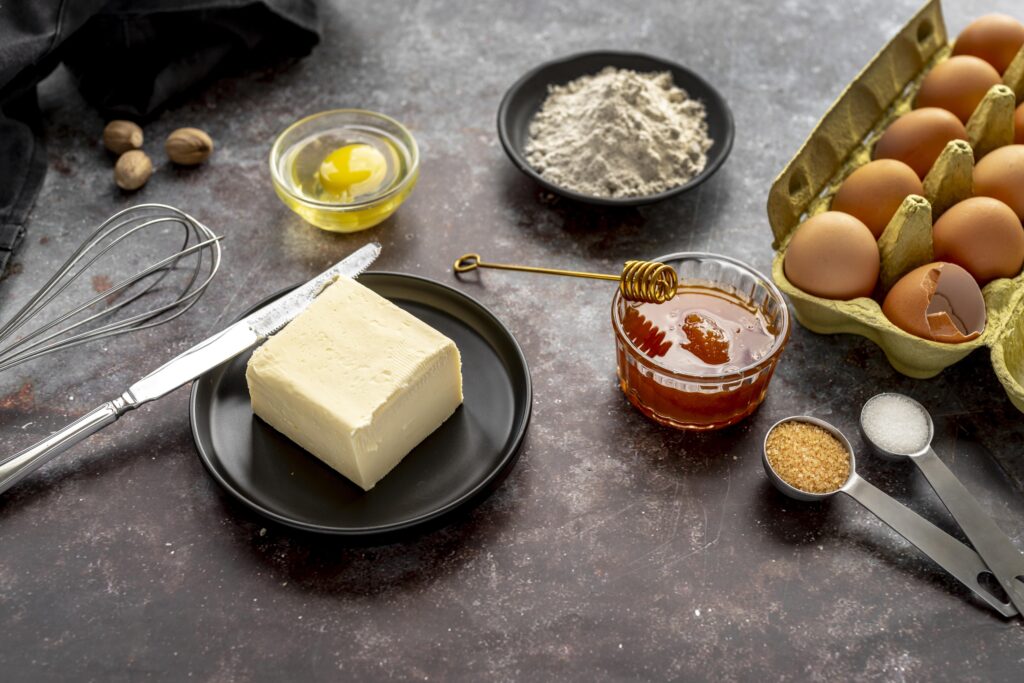Cookies are a universal favorite, but the debate over butter vs. oil in cookies can leave bakers wondering which is better. Each fat has its own impact on texture, flavor, and even health considerations. This guide explores how butter and oil compare, their pros and cons, and how to use them effectively for the perfect batch of cookies.

Whether you prefer the richness of butter or the moisture-retaining properties of oil, understanding their roles in baking can help you make informed decisions.
Why Fats Are Essential in Cookies
Fats play a crucial role in baking, particularly in cookies. They affect everything from the dough’s structure to the flavor and texture of the final product.
How Fats Work in Cookies
- Tenderizing the Dough: Fats coat flour particles, limiting gluten formation and ensuring a soft, tender texture.
- Enhancing Flavor: Butter adds a distinct richness, while oil serves as a neutral base to let other flavors shine.
- Contributing Moisture: Fats retain moisture, keeping cookies soft for longer periods.
For an in-depth look at how fats influence baked goods, check out Serious Eats’ baking fats guide.
Butter in Cookies: Pros and Cons
Butter is a traditional choice for cookies and brings distinct characteristics to the table.
Advantages of Butter
- Rich Flavor: Butter contains milk solids that caramelize during baking, resulting in a nutty, sweet taste.
- Texture: Its low melting point helps cookies spread evenly, creating crisp edges and chewy centers.
- Appearance: Butter-based cookies often have a golden-brown finish and glossy sheen.
When to Use Butter
Butter works best in recipes that prioritize flavor, such as:
- Shortbread Cookies: Their richness relies on butter.
- Sugar Cookies: Butter enhances crisp textures and holds decorative shapes.
For more insights into butter’s role in baked goods, read The Kitchn’s guide to butter in baking.
Disadvantages of Butter
- Shelf Life: Butter-based cookies can go stale faster than those made with oil.
- Higher Saturated Fat: Butter contains more saturated fat and cholesterol than oil, which may not suit all dietary needs.
Oil in Cookies: Pros and Cons
Oil is a versatile alternative to butter, especially in vegan or dairy-free recipes.
Advantages of Oil
- Enhanced Moisture: Oil keeps cookies moist for longer periods, making it ideal for soft cookie recipes.
- Neutral Flavor: Oils like canola or sunflower allow bold ingredients like chocolate or spices to shine through.
- Ease of Use: Oil doesn’t require softening or creaming, saving time during preparation.
When to Use Oil
Oil is ideal for recipes prioritizing moisture and softness, such as:
- Peanut Butter Cookies: Oil complements the nutty base.
- Vegan Cookies: Oil is essential in dairy-free or eggless recipes.
Learn more about oil options for healthier baking in Healthline’s healthiest cooking oils guide.
Disadvantages of Oil
- Dense Texture: Oil lacks the aeration provided by butter, leading to denser cookies.
- Potential Greasiness: Overusing oil can make cookies feel heavy or greasy.
Butter vs. Oil: Key Differences in Cookies
1. Texture and Spread
- Butter: Creates cookies with crisp edges, soft centers, and a flaky texture.
- Oil: Produces softer, denser cookies with a compact crumb. Cookies made with oil spread less during baking.
2. Flavor Profile
- Butter: Adds richness and depth of flavor through caramelization.
- Oil: Acts as a neutral base, allowing bold ingredients to stand out.
3. Health Considerations
- Butter: Contains saturated fats and cholesterol.
- Oil: Offers unsaturated fats, which are better for heart health. Oils like olive and avocado also provide additional nutrients.
For more on choosing healthy baking oils, read what is the healthiest oil for baking cakes.
Tips for Substituting Butter with Oil
If you’re substituting oil for butter in cookies, follow these tips for success:
1. Adjust the Ratio
Since oil is 100% fat and butter is 80% fat, use 3/4 cup of oil for every 1 cup of butter. Reduce other liquid ingredients slightly to maintain consistency.
2. Experiment with Different Oils
- Coconut Oil: Adds a subtle tropical flavor, perfect for oatmeal or peanut butter cookies.
- Olive Oil: Works well in savory-style cookies or recipes with spices.
3. Start with Small Batches
Testing substitutions in smaller batches helps ensure you achieve the desired flavor and texture without wasting ingredients.
FAQs: Butter vs. Oil in Cookies
Are Cookies Better with Butter or Oil?
It depends on the recipe. Butter creates richer, more flavorful cookies, while oil offers moisture and softness, ideal for specific recipes.
What Happens If I Replace Butter with Oil in Cookies?
Replacing butter with oil results in moister, denser cookies that spread less during baking.
Which Is Healthier for Cookies: Butter or Oil?
Oils like canola or olive oil are healthier due to their unsaturated fats. However, butter provides a richer flavor and traditional cookie texture.
Can I Use Both Butter and Oil in Cookies?
Yes! Combining butter and oil balances flavor and texture, creating cookies that are both moist and flavorful.
Conclusion
The choice between butter and oil for cookies ultimately depends on your baking goals. Butter excels at delivering rich flavor and crisp textures, while oil is perfect for recipes that require extra moisture or cater to dietary restrictions. Don’t hesitate to experiment with both fats—or even combine them—to achieve the perfect cookie.
For more baking insights, visit Recipes Mint and explore guides like why is my banana bread dense and not fluffy or how to keep brownies from getting hard on top. Happy baking!
